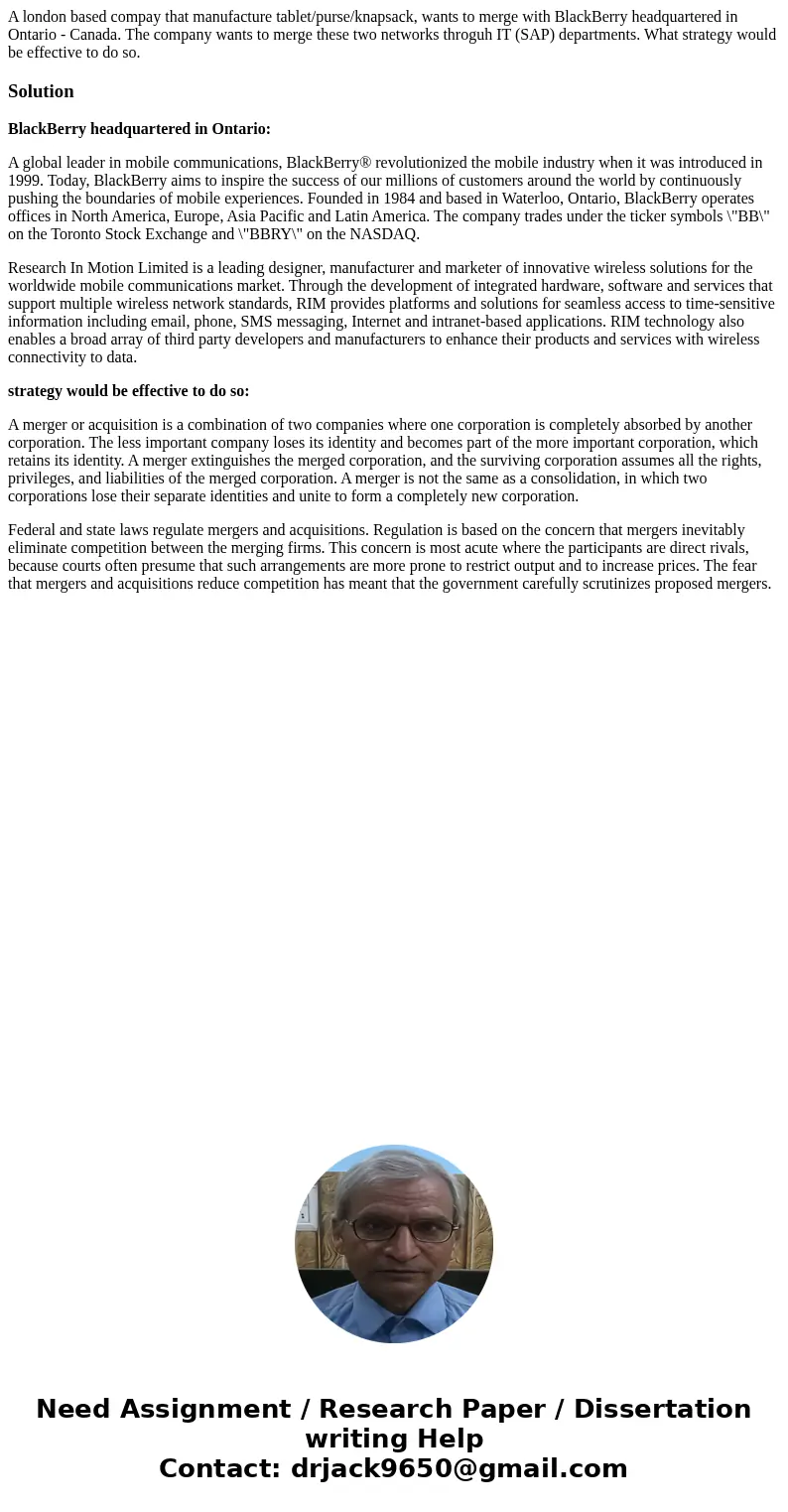A london based compay that manufacture tabletpurseknapsack w
A london based compay that manufacture tablet/purse/knapsack, wants to merge with BlackBerry headquartered in Ontario - Canada. The company wants to merge these two networks throguh IT (SAP) departments. What strategy would be effective to do so.
Solution
BlackBerry headquartered in Ontario:
A global leader in mobile communications, BlackBerry® revolutionized the mobile industry when it was introduced in 1999. Today, BlackBerry aims to inspire the success of our millions of customers around the world by continuously pushing the boundaries of mobile experiences. Founded in 1984 and based in Waterloo, Ontario, BlackBerry operates offices in North America, Europe, Asia Pacific and Latin America. The company trades under the ticker symbols \"BB\" on the Toronto Stock Exchange and \"BBRY\" on the NASDAQ.
Research In Motion Limited is a leading designer, manufacturer and marketer of innovative wireless solutions for the worldwide mobile communications market. Through the development of integrated hardware, software and services that support multiple wireless network standards, RIM provides platforms and solutions for seamless access to time-sensitive information including email, phone, SMS messaging, Internet and intranet-based applications. RIM technology also enables a broad array of third party developers and manufacturers to enhance their products and services with wireless connectivity to data.
strategy would be effective to do so:
A merger or acquisition is a combination of two companies where one corporation is completely absorbed by another corporation. The less important company loses its identity and becomes part of the more important corporation, which retains its identity. A merger extinguishes the merged corporation, and the surviving corporation assumes all the rights, privileges, and liabilities of the merged corporation. A merger is not the same as a consolidation, in which two corporations lose their separate identities and unite to form a completely new corporation.
Federal and state laws regulate mergers and acquisitions. Regulation is based on the concern that mergers inevitably eliminate competition between the merging firms. This concern is most acute where the participants are direct rivals, because courts often presume that such arrangements are more prone to restrict output and to increase prices. The fear that mergers and acquisitions reduce competition has meant that the government carefully scrutinizes proposed mergers.

 Homework Sourse
Homework Sourse